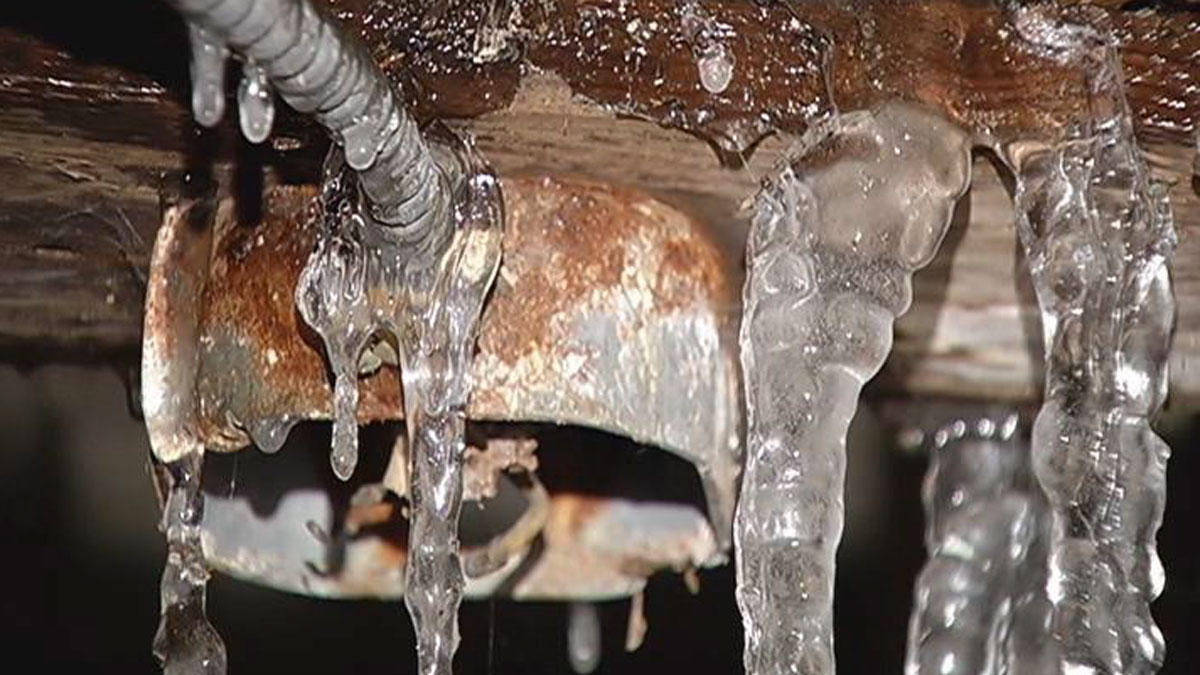Avoiding Frozen Plumbing in Winter: Professional Advice
Avoiding Frozen Plumbing in Winter: Professional Advice
Blog Article
What are your thoughts about Winter Plumbing Precautions: Preventing Frozen Pipes?

Winter can damage your pipes, specifically by freezing pipes. Here's how to prevent it from happening and what to do if it does.
Intro
As temperatures decrease, the danger of frozen pipes boosts, potentially causing pricey fixings and water damages. Comprehending just how to prevent frozen pipelines is essential for homeowners in chilly climates.
Prevention Tips
Insulating susceptible pipelines
Wrap pipelines in insulation sleeves or use warmth tape to shield them from freezing temperature levels. Focus on pipes in unheated or external locations of the home.
Home heating methods
Maintain indoor spaces appropriately heated up, especially areas with pipes. Open cabinet doors to enable cozy air to flow around pipes under sinks.
How to recognize icy pipelines
Seek lowered water circulation from taps, unusual smells or sounds from pipelines, and noticeable frost on revealed pipes.
Long-Term Solutions
Architectural changes
Consider rerouting pipelines away from outside walls or unheated locations. Include extra insulation to attic rooms, cellars, and crawl spaces.
Updating insulation
Buy high-quality insulation for pipelines, attics, and walls. Correct insulation helps keep consistent temperatures and minimizes the danger of frozen pipelines.
Safeguarding Outside Plumbing
Garden tubes and outdoor faucets
Detach and drain garden hose pipes before winter months. Mount frost-proof faucets or cover outdoor faucets with shielded caps.
Understanding Icy Pipelines
What causes pipes to ice up?
Pipes freeze when subjected to temperatures listed below 32 ° F (0 ° C) for expanded periods. As water inside the pipes freezes, it increases, taxing the pipeline wall surfaces and potentially causing them to rupture.
Risks and problems
Frozen pipes can result in water disturbances, residential or commercial property damages, and expensive repairs. Burst pipelines can flooding homes and cause comprehensive architectural damages.
Signs of Frozen Water Lines
Identifying icy pipes early can avoid them from rupturing.
What to Do If Your Pipelines Freeze
Immediate activities to take
If you suspect icy pipes, maintain taps open up to alleviate pressure as the ice thaws. Make use of a hairdryer or towels soaked in hot water to thaw pipelines gradually.
Verdict
Preventing frozen pipelines needs positive measures and quick actions. By understanding the reasons, signs, and preventive measures, home owners can safeguard their plumbing throughout cold weather.
5 Ways to Prevent Frozen Pipes
Drain Outdoor Faucets and Disconnect Hoses
First, close the shut-off valve that controls the flow of water in the pipe to your outdoor faucet. Then, head outside to disconnect and drain your hose and open the outdoor faucet to allow the water to completely drain out of the line. Turn off the faucet when done. Finally, head back to the shut-off valve and drain the remaining water inside the pipe into a bucket or container. Additionally, if you have a home irrigation system, you should consider hiring an expert to clear the system of water each year.
Insulate Pipes
One of the best and most cost-effective methods for preventing frozen water pipes is to wrap your pipes with insulation. This is especially important for areas in your home that aren’t exposed to heat, such as an attic. We suggest using foam sleeves, which can typically be found at your local hardware store.
Keep Heat Running at 65
Your pipes are located inside your walls, and the temperature there is much colder than the rest of the house. To prevent your pipes from freezing, The Insurance Information Institute suggests that you keep your home heated to at least 65 degrees, even when traveling. You may want to invest in smart devices that can keep an eye on the temperature in your home while you’re away.
Leave Water Dripping
Moving water — even a small trickle — can prevent ice from forming inside your pipes. When freezing temps are imminent, start a drip of water from all faucets that serve exposed pipes. Leaving a few faucets running will also help relieve pressure inside the pipes and help prevent a rupture if the water inside freezes.
Open Cupboard Doors
Warm your kitchen and bathroom pipes by opening cupboards and vanities. You should also leave your interior doors ajar to help warm air circulate evenly throughout your home.

As a keen reader about How to prepare your home plumbing for winter weather, I figured sharing that segment was essential. Sharing is good. Who knows, you might be helping someone out. Thank you for your time. Kindly pay a visit to our website back soon.
Article Report this page